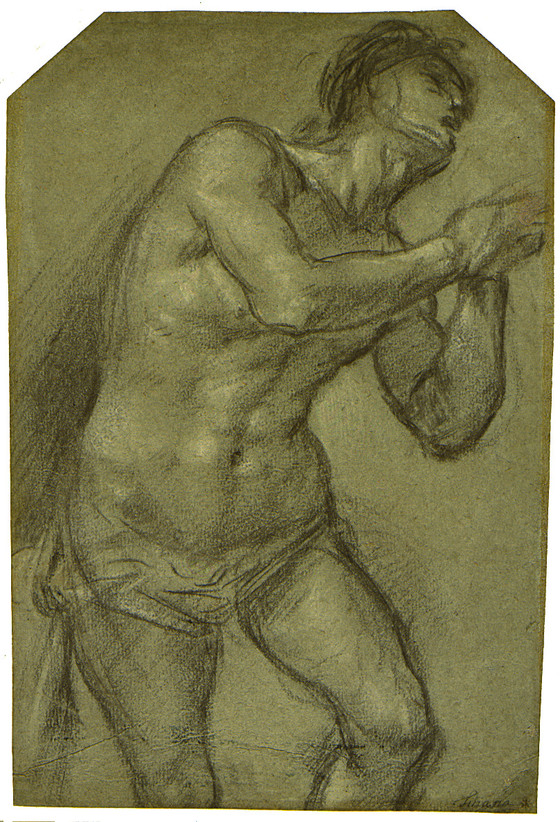Excerpted from Davis, Bruce. Master Drawings in the Los Angeles County Museum of Art. Los Angeles: Los Angeles County Museum of Art, 1997, 15.
...
Excerpted from Davis, Bruce. Master Drawings in the Los Angeles County Museum of Art. Los Angeles: Los Angeles County Museum of Art, 1997, 15.
By 1518 Bordone was in Venice, where he probably studied with Titian. The Venetian master had a profound effect on Bordone’s style, particularly in religious and mythological compositions with figures set in lush landscapes. Bordone was especially well-known for his paintings with erotic overtones, and it was this sensibility that undoubtedly prompted his invitation in 1559 by King Francis II to work in France, where he would have contact with the painters of the so-called “second school of Fontainebleau,” who shared his taste for the erotic.
Like many Venetian Renaissance drawings of dynamic single figures rendered loosely in black chalk, this sheet was once attributed to Titian, the greatest and most influential artist in sixteenth-century Venice; the great connoisseur Philip Pouncey, however, suggested as the author. The sheet illustrates the influence on Bordone of Titian’s manner of draftsmanship, particularly the painterly and atmospheric application of chalk on colored paper. The drama, dynamism, and emotional character implied by the pose of the figure exemplifies the influence on Bordone of the art of Giovanni Antonio da Pordenone. The figure’s torso and arms recall (in reverse) those of Christ in Bordone’s painting The Baptism of Christ of about 1535 in the National Gallery of Art, Washington, D.C.,1 while the legs resemble (also in reverse) the stance of Saint Christopher in the Sacra Conversazione of about 1525–26 in the Accademia Tadini, Lovere.2 Alessandro Ballarin (conversation with the author) does not support the attribution to Bordone and suggests it dates from later in the sixteenth century.
Notes
1. The painting is dated to about 1535 in Fern Rusk Shapley, National Gallery of Art: Catalogue of the Italian Paintings (Washington, D.C.: National Gallery of Art, 1979), 1: 77–78; and to about 1546–47 in Giordana Canova, Paris Bordon (Venice: Edizioni Alfieri, 1964), 117, fig. 81.
2. Ibid., 82, fig. 15.
More...



